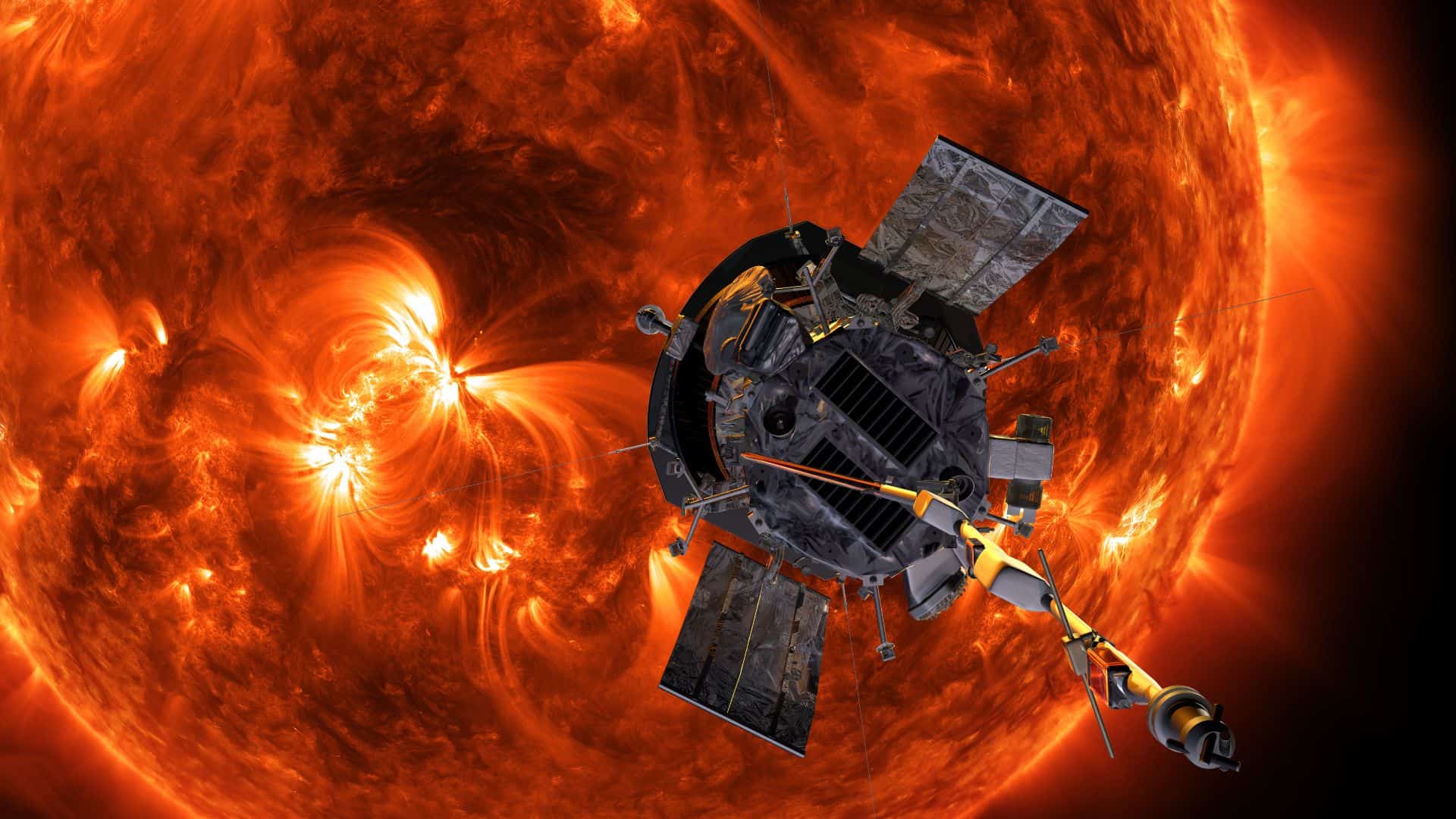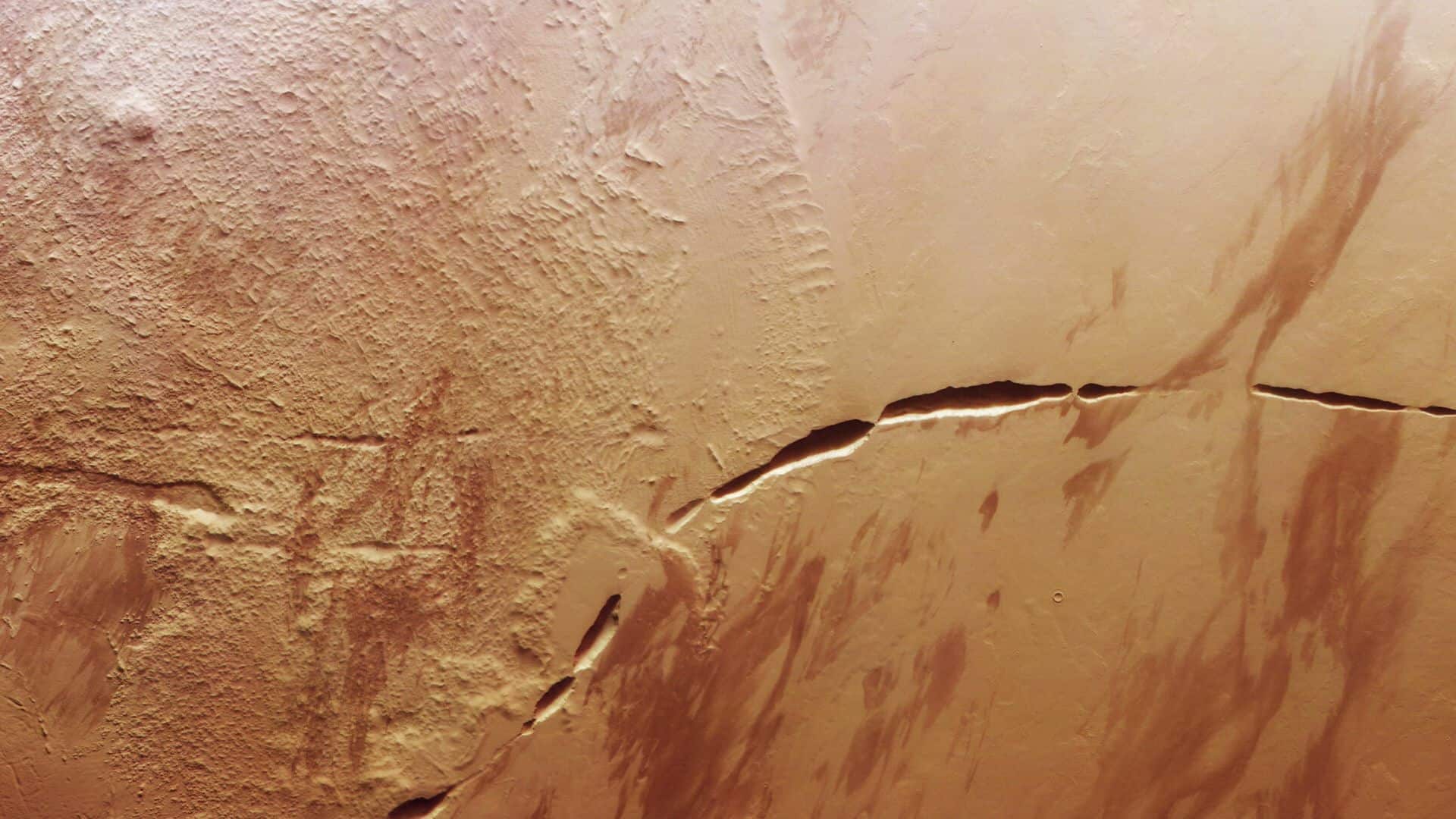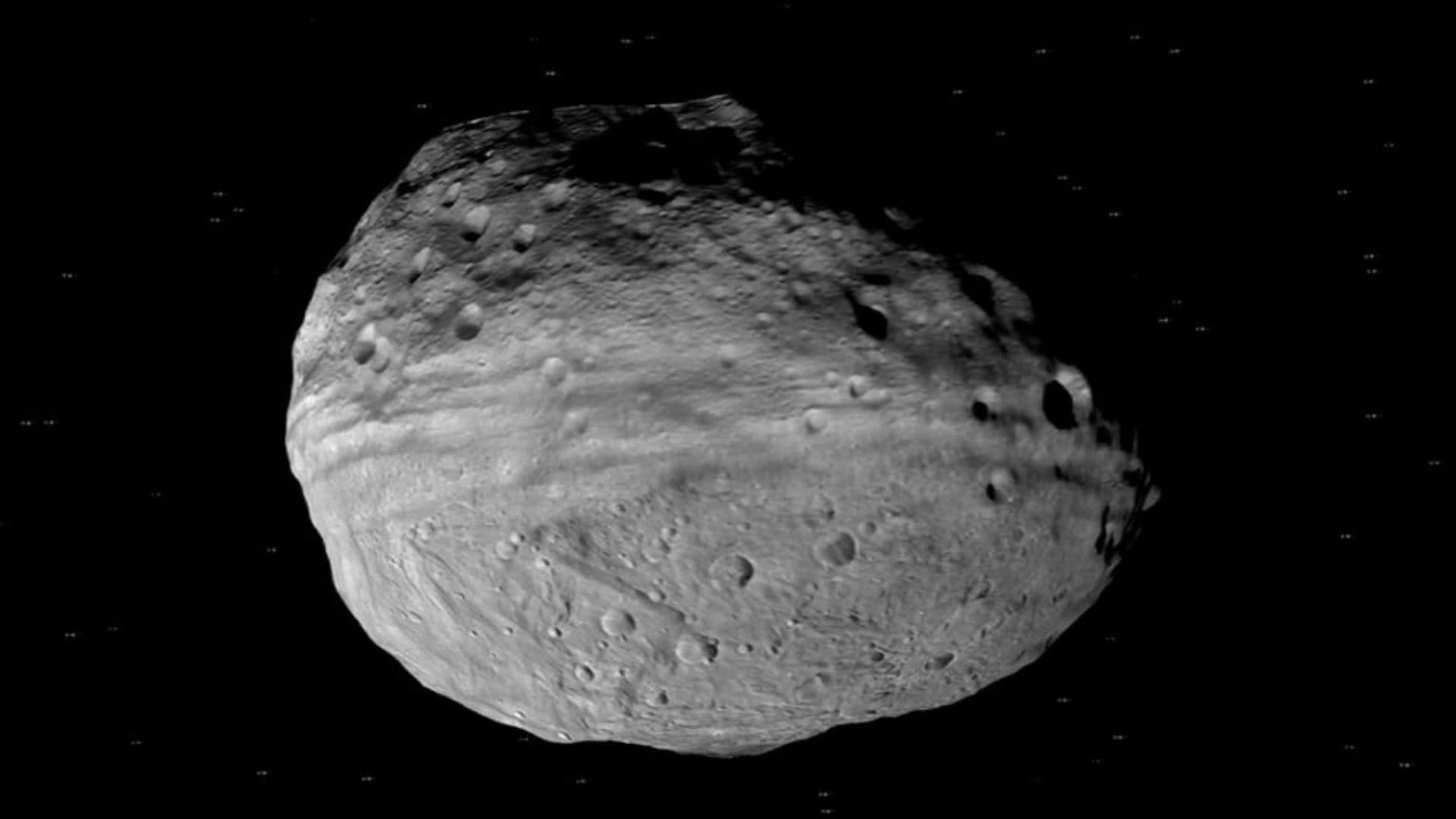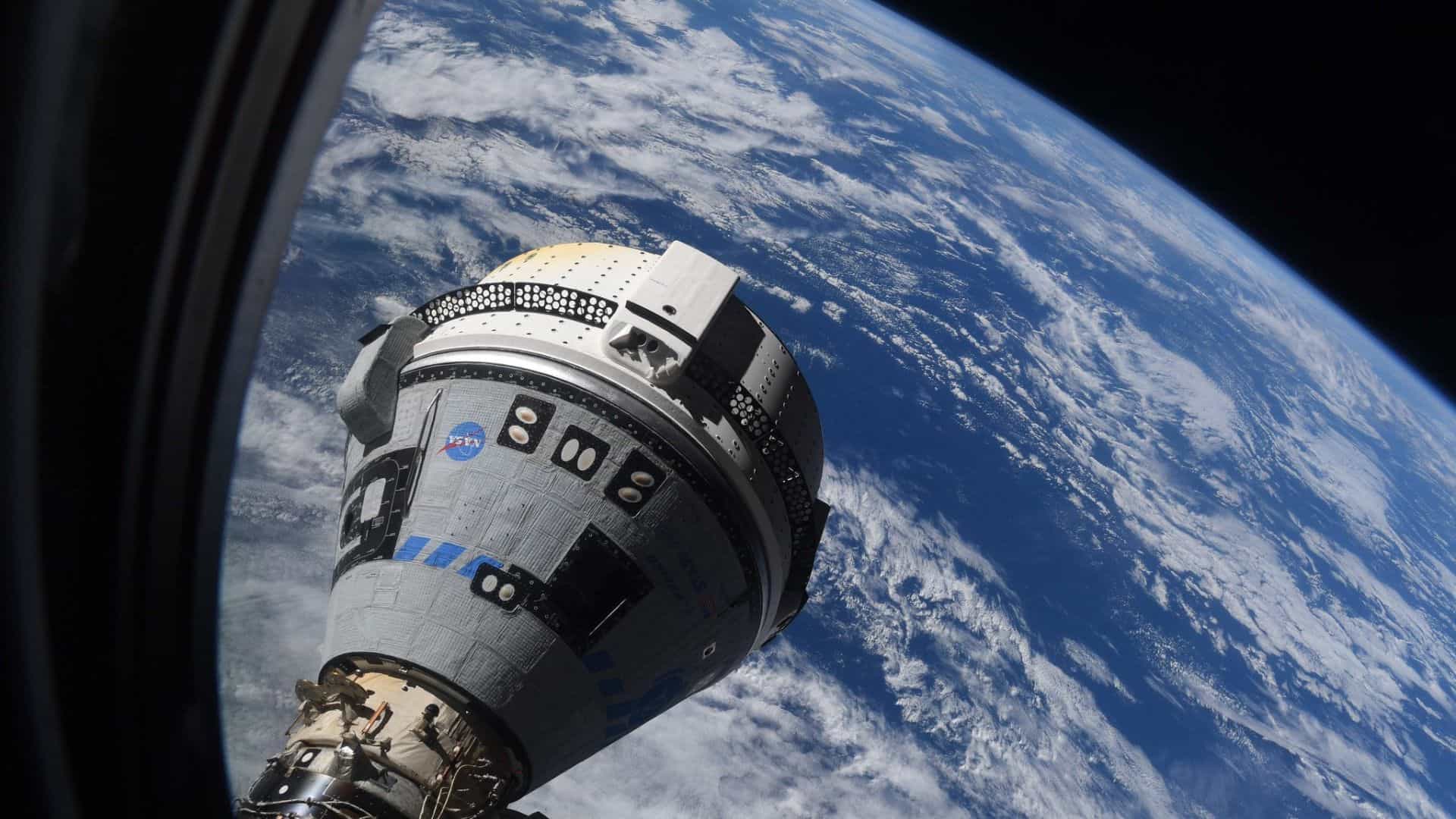The James Webb Space Telescope has captured the largest and brightest star-forming region, NGC 346, with amazing details in the Small Magellanic Cloud.
Scientists used to think that there was a lack of gas clouds to form infant stars in the Small Magellanic Cloud.
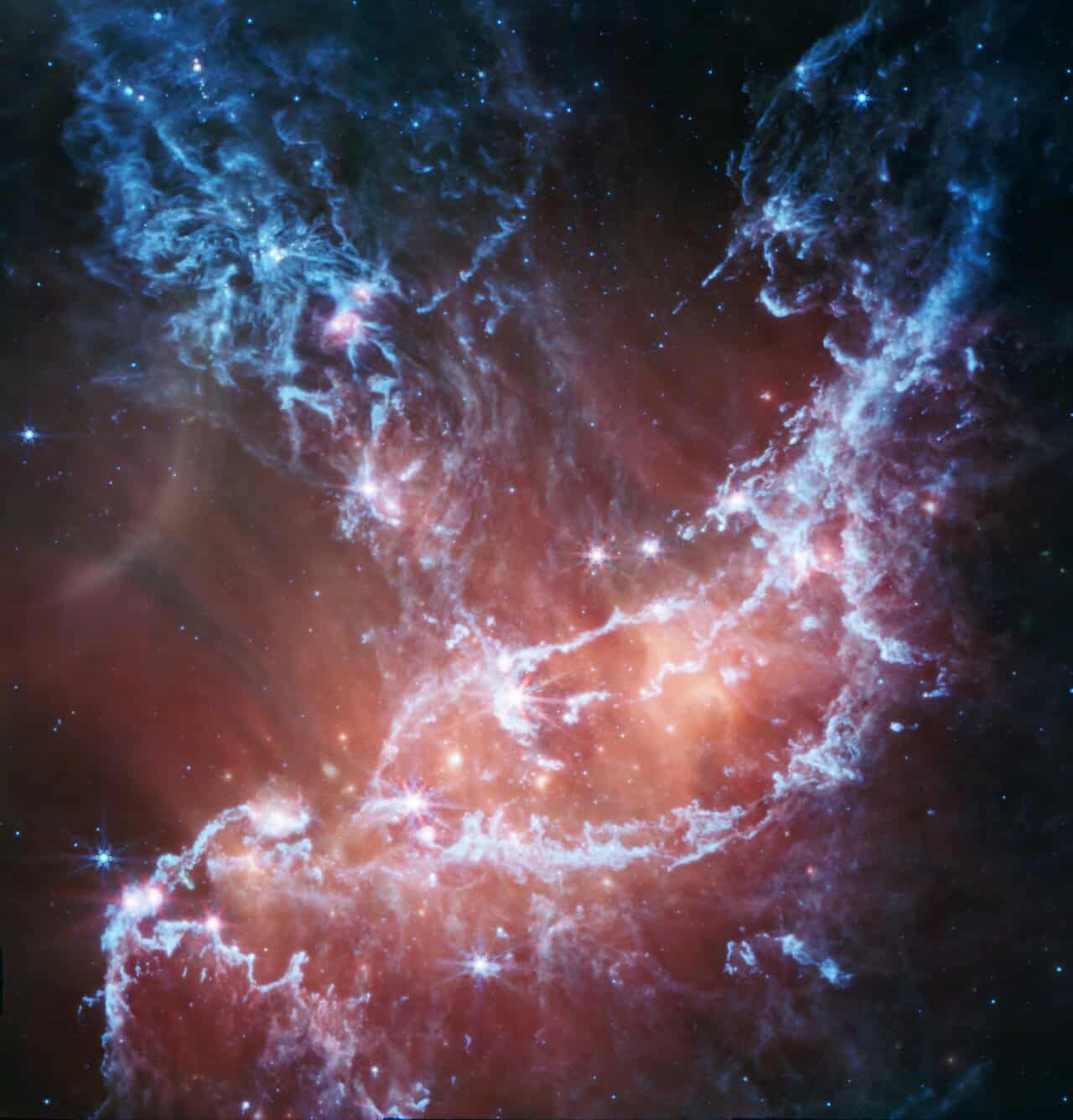
However, the new image from the Mid-Infrared Instrument (MIRI) of the James Webb Space Telescope shows that there is an ample amount of gas cloud of heavy elements like silicon and oxygen.
A gas cloud of heavy elements is necessary to form infant stars. Protostars are formed from gravitationally collapsing gas clouds, and these protostars will become main sequence stars (like our Sun) when they are able to ignite their hydrogen fuel to sustain nuclear fusion.
In the above image, bright patches and filaments mark areas with abundant numbers of protostars. The research team has already detected 1,001 pinpoint sources of light, the protostars, in NGC 346.
Here, blue tendrils like emission represent cool silicates and sooty chemical molecules known as polycyclic aromatic hydrocarbons, or PAHs, which are the building blocks to form infant stars.
Also the red diffuse light shows warm dust which shines due to the brightest and most massive stars in the center of the region.
How big is NGC 346?
NGC 346 is a young star-forming region that is about 200 light-years across. So the light will take 200 years to cross the region of NGC 346.
Light-year is the distance traveled by light in one year in space.
How far away is NGC 346?
NGC 346 is located about 210 000 light-years away in the Small Magellanic Cloud and this Small Magellanic Cloud is located in the southern constellation Tucana.
The Small Magellanic Cloud is a dwarf satellite galaxy of our Milky Way. It is seen to the unaided eye from the southern hemisphere.
The James Webb Space Telescope is a joint venture between NASA, European space agency and Canadian space agency.
Please follow us on Facebook and Twitter to get latest space news, upcoming skywatching events and astronomy-related content.
